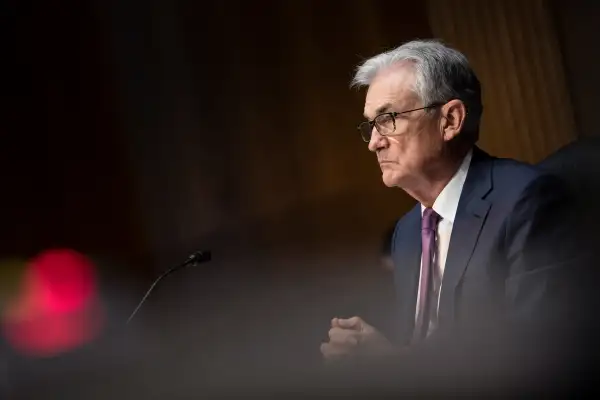What the Fed's Impending Rate Hikes Mean for Stocks, Crypto and More
Money is not a client of any investment adviser featured on this page. The information provided on this page is for educational purposes only and is not intended as investment advice. Money does not offer advisory services.

The past few years have been a great time to be an investor, with huge rallies in everything from stocks to cryptocurrencies to real estate. But with the Federal Reserve getting ready to hike interest rates to fight inflation, owners of some of these assets could be in for a rude awakening.
For years the Federal Reserve has been holding short-term interest rates at near-record low levels. But in December consumer prices rose by 7% year over year. It was the largest single-year increase since 1982. Wall Street now expects the Fed to raise interest rates as many as four times in 2022.
Higher short-term interest rates make it harder and more costly for both consumers and businesses to borrow, effectively reducing the supply of money coursing through the economy. That should help constrain prices for goods that Americans have been struggling to afford like pork and used cars – but also for investments, including the stocks in millions of retirement savers' 401(k)s, as well as speculative assets, like cryptocurrency.
“We’re at the beginning of this normalization process in terms of monetary policy, says,” Charles Schwab & Co. Chief Investment Strategist Liz Ann Sonders said. “It’s probably going to be uncomfortable.”
Crypto markets react
Some formerly high-flying asset prices have been returning toward earth. The price of Bitcoin — the world’s dominant cryptocurrency by market value — has fallen 50%, from a high of almost $70,000 in November to about $35,000 now. Ethereum, the world’s second-largest cryptocurrency by market value, has posted an even sharper decrease, with its price declining about 35% since the beginning of the year.
The total market value of all cryptocurrencies combined now sits around $1.6 trillion, according to CoinMarketCap, a price-tracking website for crypto assets. That market cap is just over half of what it was in November.
Stocks and real estate
Beyond crypto, an index of non-profitable tech stocks introduced by Goldman Sachs last year, the Future Leaders Equity ETF, last year has been drastically underperforming other indices. It was trading at a high of around $42 a share in November but now trades around $33 a share.
“There's a lot of pain in portfolios that are concentrated on what we characterize as longer-duration assets,” said Matt Stucky, a senior portfolio manager with Northwestern Mutual Wealth Management Company.
“The rapid decline of interest rates made the price of waiting for that growth, waiting for that value realization, come down quite a bit,” he said. “We're seeing the flip side of that now.”
Strong returns for both stocks and bonds have made it easy for some to forget just how volatile and punishing financial markets can be. “It’s tempting to avoid diversification when things aren’t costly from a volatility perspective,” Stucky said.
As interest rates normalize, Stucky expects historic levels of market volatility to return. “What that means is, you're likely to see backs and forths in portfolio returns that are more consistent with how this year has started up,” he said.
There is one sector that has boomed that Stucky expects will continue to thrive despite rising interest rates: housing. “There continues to be a pretty acute shortage when it comes to housing supply in the U.S.,” he said. Though rising interest rates may make mortgages more expensive for homebuyers, the supply of housing remains so constrained that Stucky expects demand to remain robust.
How to navigate a difficult market
In this market, Sonders cautions investors against making bets on specific sectors as a whole. “Trying to figure out ahead of time what that next shift is going to be is a fool’s errand,” she said.
Instead, she recommends taking a so-called factor-based approach to investing with a priority on value. “Value as a factor has been by far the best performing factor for over a year now,” she said.
And while inflation is elevated now, neither Stucky or Sonders see this as a mirror of the late 1970s, a time when interest rates rose to nearly 20% on the back of persistently high inflation.
“There are more differences between the current environment and the 1970s than there are similarities,” Sonders said. “If you were to chart the misery index now it doesn’t look anything akin to what was going on in the 1970s.”
Supply chain constraints and the persistence of COVID-19 are adding to inflationary pressures, which began accelerating in April of last year. Stucky expects that will level out over the next 12 to 24 months. “We don’t expect this to be a permanent new normal,” he said.
Pre-pandemic, inflation had been running at around 2% for the past several years. “That's where the market thinks inflation is ultimately going to end up,” Stucky said.
More from Money:
Why the Stock Market Is Tanking, and What Investors Should Do Now